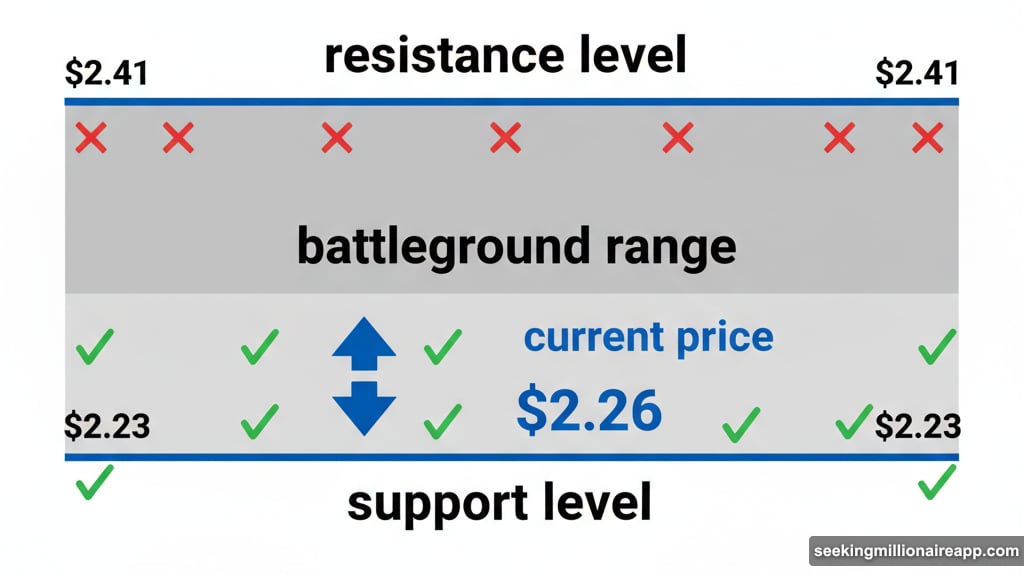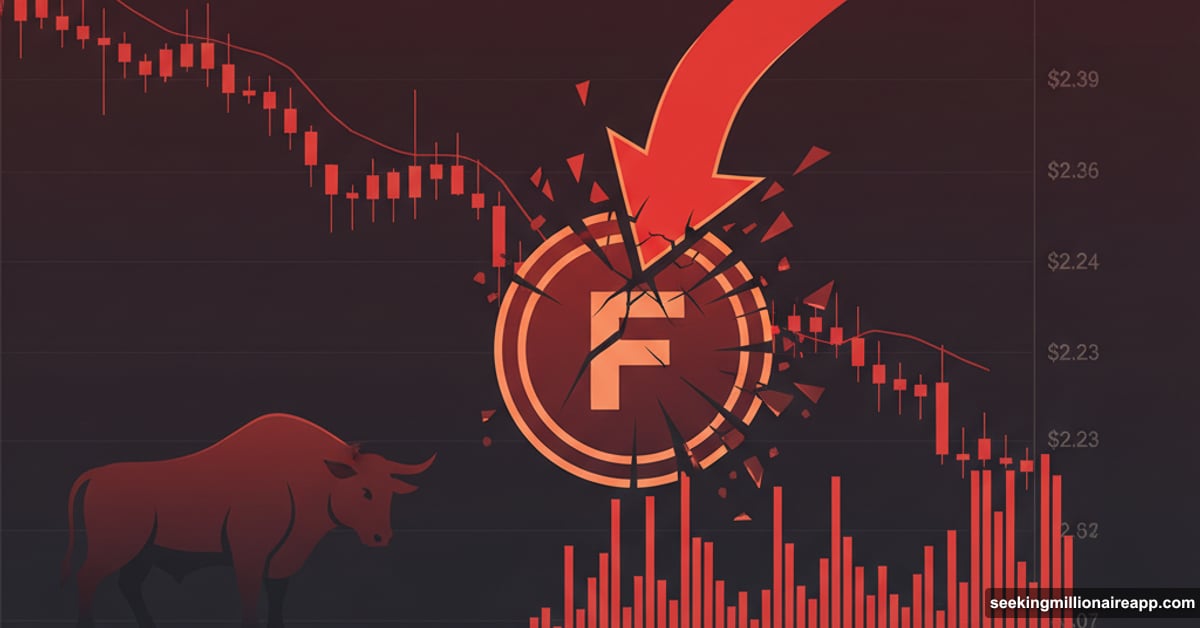Filecoin took a beating Thursday. The token plunged from $2.39 to $2.23 in just 24 hours—a sharp 7% drop that caught many traders off guard.
But the selloff tells a bigger story than just one bad day. Trading volumes exploded to nearly double the normal levels. Plus, classic panic patterns emerged that technical analysts watch for signs of exhaustion.
So what actually happened? And more importantly, where does FIL go from here?
Massive Volume Spike Signals Panic Selling
Trading activity went through the roof during the crash. Filecoin saw 5.92 million tokens change hands—crushing the typical 3.42 million daily average.
That’s not normal profit-taking. Instead, it suggests coordinated selling or forced liquidations hitting the market all at once.
Moreover, the timing matters. This volume spike coincided with price rejection at the $2.41 resistance level. Sellers dominated that zone, triggering a cascade of stop-loss orders below.
Technical analysts call this capitulation. When weak hands dump their positions in panic, it often creates short-term bottoms. But first, prices need to stabilize and buyers need to step back in.
Support Held at $2.23—For Now
The good news? Bulls defended the $2.23 support level during multiple tests throughout the day.
Volume spiked above 4.8 million tokens during these defense attempts. That shows buyers willing to step in at lower prices. However, it doesn’t guarantee this floor will hold during future selloffs.
Currently, Filecoin trades around $2.26—still 5.1% below where it started. The token needs to reclaim the $2.41 resistance level to reverse this bearish momentum.
Yet broader market conditions aren’t helping. The CoinDesk 20 index, which tracks major cryptocurrencies, dropped 3.6% on the same day. So Filecoin didn’t crash in isolation—it fell alongside most digital assets.
Classic Crash Patterns Emerge
Technical analysis models identified textbook capitulation patterns in the price action. First came violent selling that pushed prices down quickly. Then an immediate relief bounce followed.
This pattern often signals seller exhaustion. When everyone who wanted to sell already did, prices stabilize and potentially recover. But confirmation requires several days of sideways trading to prove the bottom holds.
Fresh consolidation now forms around $2.25. If this zone holds through the weekend, bulls might regain control. On the other hand, a break below $2.23 could trigger another leg down.
Volatility compression appeared in recent hours as price swings narrowed. That typically precedes either a breakout or breakdown—but which direction remains unclear.
What This Means for Traders

Short-term traders face a tricky situation. The $2.23-$2.41 range now defines the battleground between bulls and bears.
Breaking above $2.41 with strong volume would flip sentiment bullish. But failing to hold $2.23 support could send FIL tumbling toward the next support level lower.
For longer-term investors, these sharp drops create buying opportunities—if you believe in Filecoin’s fundamentals. Decentralized storage remains a growing market. Yet short-term price action often disconnects from long-term value.
Risk management matters most during volatile periods like this. Stop losses protect against further downside. Position sizing prevents single trades from wrecking your portfolio.
The Bigger Picture Nobody Mentions
Filecoin’s crash highlights a harsh reality about crypto markets. Liquidity evaporates during selloffs when you need it most.
That 7% drop happened partly because sell orders overwhelmed available buy orders. The order book thinned out, causing prices to gap down quickly. So small amounts of selling can trigger outsized price moves.
This fragility affects most altcoins outside the top tier. Bitcoin and Ethereum maintain deeper liquidity. But tokens like Filecoin remain vulnerable to rapid swings when sentiment shifts.
Watch volume carefully in coming days. If trading activity stays elevated above the 3.42 million baseline, volatility will persist. Conversely, returning to normal volumes suggests the panic passed and prices can stabilize.
The $2.25 consolidation zone will tell us everything. Hold there, and recovery becomes possible. Break lower, and another painful leg down awaits.
